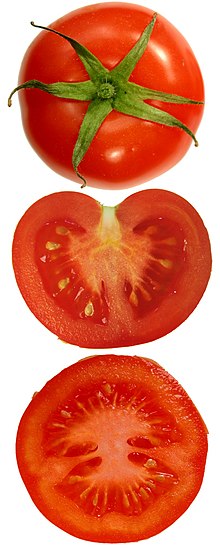**History and Spread of Tomatoes**:
– Originating in western South America, tomatoes were first used by the Aztecs and introduced to Europe by the Spanish during the Columbian exchange.
– Cultivated in Mesoamerica and distributed in Spanish colonies, tomatoes spread to China, Italy, Britain, the Middle East, North Africa, and the United States.
– Initial suspicion of tomatoes due to their relation to nightshades and toxicity concerns gradually gave way to widespread consumption globally.
**Cultural Significance and Culinary Use**:
– Tomatoes have cultural significance in various regions, such as the Aztec markets, Italian cuisine, and Middle Eastern salads.
– Used in a variety of dishes, tomatoes are versatile ingredients in salads, sauces, soups, stews, and traditional cuisines worldwide.
– The development of commercial tomato varieties focuses on flavor, yield, environmental tolerance, and disease resistance, impacting modern tomato taste and attributes.
**Botany and Cultivation**:
– Tomato plants, known for their vines and erect bush varieties, are grown worldwide in various climates.
– Cultivation techniques like greenhouse farming and attention to watering, sunlight, and soil quality are essential for growing tomatoes.
– Different varieties, including heirloom and hybrid types, require specific care for optimal growth and production.
**Nutritional Benefits**:
– Tomatoes are a good source of vitamins C and K, potassium, folate, and antioxidants, offering health benefits like cancer risk reduction and heart health support.
– Low in calories, tomatoes are a healthy addition to various dishes and diets, contributing to overall nutrition and well-being.
**Etymology and Modern Developments**:
– The etymology of the word “tomato” traces back to the Nahuatl word “tomatl,” reflecting the fruit’s origins and cultural significance.
– Modern tomato breeding efforts aim to improve yield, shelf life, size, and disease resistance, impacting taste, sugar content, and genetic traits.
– California plays a significant role in tomato production, research, and genetic stock preservation, highlighting ongoing developments in tomato agriculture.
The tomato (/təmeɪtoʊ/ or /təmɑːtoʊ/) is the edible berry of the plant Solanum lycopersicum, commonly known as the tomato plant. The species originated in western South America, Mexico, and Central America. The Nahuatl word tomatl gave rise to the Spanish word tomate, from which the English word tomato derives. Its domestication and use as a cultivated food may have originated with the indigenous peoples of Mexico. The Aztecs used tomatoes in their cooking at the time of the Spanish conquest of the Aztec Empire, and after the Spanish encountered the tomato for the first time after their contact with the Aztecs, they brought the plant to Europe, in a widespread transfer of plants known as the Columbian exchange. From there, the tomato was introduced to other parts of the European-colonized world during the 16th century.
| Tomato | |
|---|---|

| |
| Scientific classification | |
| Kingdom: | Plantae |
| Clade: | Tracheophytes |
| Clade: | Angiosperms |
| Clade: | Eudicots |
| Clade: | Asterids |
| Order: | Solanales |
| Family: | Solanaceae |
| Genus: | Solanum |
| Species: | S. lycopersicum
|
| Binomial name | |
| Solanum lycopersicum | |
| Synonyms | |
| |

Tomatoes are a significant source of umami flavor. They are consumed in diverse ways: raw or cooked, and in many dishes, sauces, salads, and drinks. While tomatoes are fruits—botanically classified as berries—they are commonly used culinarily as a vegetable ingredient or side dish.
Numerous varieties of the tomato plant are widely grown in temperate climates across the world, with greenhouses allowing for the production of tomatoes throughout all seasons of the year. Tomato plants typically grow to 1–3 meters (3–10 ft) in height. They are vines that have a weak stem that sprawls and typically needs support. Indeterminate tomato plants are perennials in their native habitat, but are cultivated as annuals. (Determinate, or bush, plants are annuals that stop growing at a certain height and produce a crop all at once.) The size of the tomato varies according to the cultivar, with a range of 1–10 cm (1⁄2–4 in) in width.

